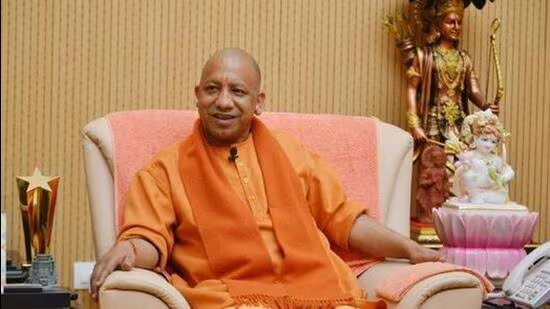Introduction
Uttar Pradesh, India’s most politically significant state which sends 80 MPs to the Lok Sabha, witnessed an epic battle between the ruling NDA and the opposition INDIA bloc comprising the Samajwadi Party and Congress on Tuesday. The UP election result sent shockwaves through the political landscape, signaling a significant shift in the state’s power dynamics.
Even though Prime Minister Narendra Modi won the Varanasi Lok Sabha seat for the third time, his National Democratic Alliance (NDA) faced a shocking result in UP. The state, which had been the BJP’s stronghold in the past two general elections, now appeared to be slipping from its grasp.
Breakdown of the Results
According to the Election Commission figures, the BJP secured 33 seats, while its allies managed to grab three more. Specifically, the Rashtriya Lok Dal (RLD) won in two constituencies, and Apna Dal (Soneylal) secured one. In stark contrast, the INDIA bloc made a stunning comeback, winning 43 seats. The Akhilesh Yadav-led Samajwadi Party emerged as a significant force, claiming 37 seats, while Congress secured six Lok Sabha constituencies. Additionally, Chandrashekhar of the Azad Samaj Party (Kanshiram) won from the Nagina seat.
The BJP, which had previously dominated the state by winning 62 out of 80 seats in the 2019 Lok Sabha elections, found itself considerably weakened. This time, the party stuck to its old ally, Apna Dal (Soneylal), and also brought in Jayant Chaudhary’s RLD and OP Rajbhar’s Suheldev Bharatiya Samaj Party into the NDA front. However, these alliances did not suffice to maintain their dominance.
A Drastic Shift from 2019
In the 2019 Lok Sabha elections, the BJP alone won 62 seats in Uttar Pradesh, while the BSP and Samajwadi Party, then allies, won ten and five seats, respectively. The BJP-led National Democratic Alliance (NDA) had become the largest coalition in the Lok Sabha elections, surpassing the majority mark of 272 seats. Despite this, the BJP did not achieve its ambitious goal of securing 370 seats independently and over 400 seats with its allies.
In the current scenario, according to the Election Commission of India (ECI), the Bharatiya Janata Party (BJP) secured 240 seats nationwide, putting it well ahead of Congress, which won 99 seats. However, the BJP’s tally fell by 63 seats compared to its 2019 performance. In contrast, Congress made significant gains, adding 55 and 47 more seats than in 2014 and 2019, respectively.
Foreign Media Reactions
The international media reacted strongly to the UP election result. The Washington Post highlighted that “the populist prime minister has never failed to secure a majority in state or national elections over a 23-year political career and has enjoyed landslide wins in previous elections. But now Modi seems to be facing a political setback.” The New York Times echoed this sentiment, stating, “The aura of invincibility around Narendra Modi has been shattered… Modi’s Bharatiya Janata Party was poised to lose its parliamentary seat in Ayodhya.”
Dawn, a Pakistan-based media portal, described the results with the headline “India vote count shows Modi alliance winning surprisingly narrow majority.” Al Jazeera pointed out that the new parliament would present challenges and necessitate compromises for Modi. The Financial Times suggested that the results marked a return to coalition politics, while the BBC highlighted both the achievements and criticisms of Modi’s tenure.
Factors Influencing the Results
Several factors contributed to the BJP’s decline in Uttar Pradesh:
Sidelining the Yogi Narrative
The perception that the Modi-Shah duo wanted to replace Yogi Adityanath as the chief minister of UP played a crucial role in affecting BJP’s fortunes adversely. Yogi Adityanath had earned a reputation for himself as an honest administrator credited with improving the law and order situation in the state. His no-nonsense attitude made him a popular figure, and his perceived sidelining did not sit well with many voters.
Ticket Distribution Issues
The BJP’s decision to impose their candidates despite opposition from locals and the RSS cadre also cost them heavily. This was particularly evident in 10-15 seats. Discontent within the Rajput community in western UP, coupled with the INDIA alliance’s strategy of giving more tickets to non-Yadav OBCs (like Kushwaha, Maurya, Saini, and Shakya), resulted in major losses for the BJP in the state. The decision to field many sitting MPs (47 out of 62) led to significant anti-incumbency sentiments.
Divisive Campaigns
BJP’s campaign focused more on rhetoric rather than developmental issues. Modi’s campaign included controversial statements accusing Congress of trying to redistribute property to those with many children. Such divisive narratives seemed to alienate a portion of the electorate, which expected a focus on the government’s achievements over the past decade.
Waning Modi Magic
This election differed from the 2014 and 2019 campaigns, where PM Modi’s appeal was a major draw. The lack of excitement in the current campaign indicated a shift. Most of the seats witnessed a direct fight between BJP and the INDIA alliance as the BSP was reduced to the sidelines. Local and caste factors played a significant role, while the BJP relied solely on the ‘Modi ki guarantee’ slogan.
Conclusion
The UP election result is a wake-up call for the BJP. It underscores the necessity for the party to revisit its strategies and address the concerns of its voter base. Despite retaining a significant presence, the reduced majority highlights the electorate’s demand for a more inclusive and developmental agenda. The INDIA bloc’s resurgence indicates a vibrant democratic process, where electoral fortunes can shift dramatically, reflecting the dynamic nature of Indian politics.
This result not only reshapes the political landscape of Uttar Pradesh but also sets the tone for future electoral battles in India. As parties analyze the outcomes and strategize for upcoming elections, the lessons from UP will undoubtedly play a pivotal role in shaping their approaches.
Also Read: Election Results 2024: A Battle for India’s Future
Pinterest: Khabarey









